The 12th edition of IBSA Foundation’s Fellowship program recorded the highest number of applications to date: 259 submissions from 45 countries worldwide.
From these, the Scientific Board of IBSA Foundation selected the six winning projects, and awarded a €32,000 Fellowship for each in the following key areas: dermatology, endocrinology, fertility/urology, pain medicine/orthopaedics/rheumatology, and Healthy Aging–Regenerative Medicine.
Healthy Aging–Regenerative Medicine, which received an exceptional number of applications, stood out as the most competitive area—resulting in two Fellowships being awarded.
The award ceremony
On 27 May 2025, in the prestigious setting of Palazzo Giureconsulti in Milan, the official award ceremony brought together winners, Scientific Board members, and leading figures from the academic and scientific communities.
It was a moment of celebration, but also of reflection—on the strategic role of scientific research, and the urgency of investing in young talent to drive innovation and meet the challenges of today’s society.
Investing in research to strengthen the innovation ecosystem
At the heart of the event was a roundtable titled: “Investing in independent research to foster talent and strengthen competitiveness”, moderated by science journalist Luca Carra. The discussion tackled a timely and pressing question: how can we support and enhance the global competitiveness of the research landscape?
Joining the conversation were some of the most respected voices in the field:
- Alberto Mantovani, Scientific Director Emeritus of IRCCS Istituto Clinico Humanitas, President of the Humanitas Foundation for Research, and Professor Emeritus at Humanitas University
- Irene Bozzoni, Professor Emeritus of Molecular Biology at Sapienza University of Rome and senior researcher at the Italian Institute of Technology
- Silvia Misiti, Director of IBSA Foundation for scientific research
- Andrea Alimonti, Director of the Institute of Oncology Research (IOR) in Bellinzona, Head of the Molecular Oncology Group, Full Professor at Università della Svizzera italiana in Lugano and ETH Zurich, and member of the Scientific Board of IBSA Foundation
- Antonio Musarò, Full Professor at the Department of Anatomical, Histological, Forensic Medicine and Orthopaedic Sciences at Sapienza University of Rome, and member of the Scientific Board of IBSA Foundation
- Domenico Salvatore, MD, PhD, Full Professor of Endocrinology at the Department of Public Health, University of Naples Federico II, and member of the Scientific Board of IBSA Foundation

Scientific Director Emeritus of IRCCS Istituto Clinico Humanitas, President of the Humanitas Foundation for Research, and Professor Emeritus at Humanitas University
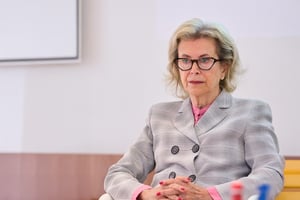
Professor Emeritus of Molecular Biology at Sapienza University of Rome and senior researcher at the Italian Institute of Technology
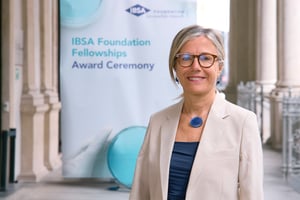
Director of IBSA Foundation for scientific research
The discussion emphasized the value of private foundations as key players in strengthening the research ecosystem, highlighting the importance of supporting the next generation of scientists—especially during the critical stage when ideas and ambition often meet limited opportunities.
The IBSA Foundation Fellowships were created to meet this very need: a concrete tool to recognize merit and innovation, offering young researchers the resources to bring their ideas to life.
It’s an investment that extends beyond individual careers—aiming to create a lasting impact on the broader research community.
Meet the winners of this twelfth edition and explore their projects.
The new edition
The 2025 call for applications opens today, introducing an important new element: the Equity Prize—a €5,000 award that will go to the most outstanding scientific project conducted in a laboratory, institution, or university located in a country with limited access to funding and resources.
This new recognition will complement the six €32,000 Fellowships, which have been confirmed for the thirteenth edition of the program.
With this initiative, IBSA Foundation sets a new goal: to unlock underrepresented research potential in disadvantaged settings, and to promote a more inclusive international scientific landscape.
Applications are open until 31 January 2026 on the dedicated platform.
Now discover the winners and their projects from this 12th edition.
2024 Fellowship Winners
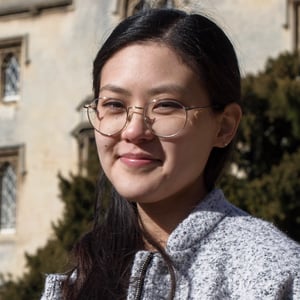
Dermatology
Masami Ando Kuri
Wellcome Sanger Institute, Cellular genetics, Haniffa Lab, Cambridge, UK
Project:
Skin conditions are prevalent and affect millions of individuals. Within the skin, there are a myriad of cell types amongst which the most abundant glia in the peripheral nervous system are Schwann cells (SC). SC are known to play a role in tissue repair, but their involvement in skin diseases like atopic dermatitis, keloids, and psoriasis is not well understood. While early research has begun to explore SC behavior in these conditions, no large-scale study has mapped their diversity across both healthy and diseased skin. This project aims to create a comprehensive single-cell and spatial transcriptomic atlas of human skin SC to better understand their role in health and disease. We will characterize the diversity of SC populations in healthy skin and 23 skin conditions, validate their spatial distribution in situ using spatial transcriptomics and advanced 3D imaging techniques. Additionally, we will identify the spatial niches of SC in the skin and explore their potential roles in disease regulation. The resulting SC atlas will be a valuable resource for understanding and treating conditions like eczema, acne, psoriasis, and cancer. This open-access resource will also accelerate future research on SC biology across different organs, fostering advancements in both clinical and basic dermatological science.
Interview:

Endocrinology
Enchen Zhou
University of California, The Christopher Glass Laboratory, San Diego, USA
Project:
This study focuses on improving the regulation of glucagon-like peptide 1 (GLP-1), a key therapeutic target for cardiometabolic diseases such as obesity and diabetes. Preliminary results from the study suggest that selective inhibition of certain intestinal transcription factors could offer a new strategy for treating obesity, diabetes and diet-induced hepatic steatosis.
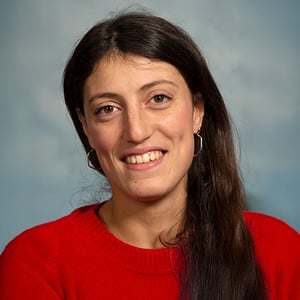
Fertility/Urology
Ilaria Chiaradia
Dipartimento di Biologia e Biotecnologie Charles Darwin, Sapienza Università di Roma, Italy
Project:
Common abuse substances like alcohol, caffeine, and tobacco are teratogenic agents that can disrupt foetal brain development during gestation. Their effect is studied individually despite their often-combined intake.
The proposed project aims to investigate the synergistic effect of polydrug abuse on foetal brain development using brain organoids. We will use a high-throughput drug screening platform based on diverse genetics, and diverse ethnicity human organoids, all the way to patient-derived samples.
Polydrug exposure will be tested at different stages of brain development up to mid-gestation, according to the developmental window recapitulated in brain organoids. The study will employ refined protocols to ensure high inter-sample reproducibility. Preliminary results with pre-patterning of pluripotent stem cells and morphology-guided quality screening of organoids have been shown to overcome the hurdle of poor sample-to-sample reproducibility.
Using advanced imaging and analysis techniques, the project will assess teratogen impact on neural progenitor proliferation, differentiation, neuronal maturation, and activity. This innovative approach aims to provide insights into the synergistic effect of multiple abuse substances during pregnancy, advancing beyond the traditional single-drug studies.
Interview:

Pain Medicine/Rheumatology/Orthopaedics
Prach Techameena
Karolinska Institutet, Neurobiology of pain & Therapeutics, Saida Hadjab Group, Stockholm, Sweden
Project:
Pain, while a vital sensory warning mechanism, becomes debilitating in its chronic forms, such as neuropathic pain (NP).
The project aims to elucidate the molecular mechanisms underlying pain chronification and modulation through physical exercise, leveraging cutting-edge single-cell omics and bioinformatics approaches.
This study intends to (1) map transcriptional and epigenetic changes in nociceptors and associated cell types during NP progression, (2) identify molecular pathways activated by exercise during NP, and (3) uncover therapeutic targets for restoring nociceptor function. Ultimately, this work will also serve as a foundational resource for other researchers in the field of pain biology.
Interview:
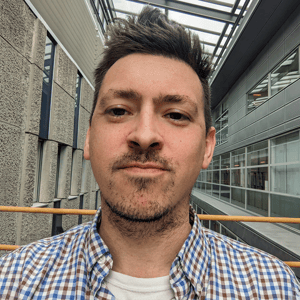
Healthy Aging/Regenerative Medicine
Sergio Perez Diaz
Karolinska Institutet, Division of Clinical Physiology, Laboratory of Medicine Department, Stockholm, Sweden
Project:
A reduction in skeletal muscle (SkMuscle) mass or atrophy, is associated with a decline in independence and quality of life of aged individuals. It is estimated that up to 27% of the global population exhibits some degree of skeletal muscle atrophy. The development of SkMuscle atrophy is influenced by several factors, including natural aging and reduced physical activity.
Despite the initiatives encouraging an active lifestyle as a countermeasure against SkMuscle atrophy and the scientific efforts, there is still no standard therapy against the involuntary loss of SkMuscle mass associated with aging. Hence, new approaches to explore potential novel regulators of SkMuscle atrophy should be considered. Long non-coding RNAs (lncRNAs) are emerging as significant coordinators of SkMuscle physiological processes. Following interventions that induce SkMuscle atrophy, we found a not previously described LncRNA sequence overexpressed in mouse and human skeletal muscle.The objective of this project is to investigate the role of this novel LncRNA in SkMuscle homeostasis and regeneration. To achieve the project objectives, we will use an innovative human model of SkMuscle.
Using human donors SkMuscle stem cells, I developed a SkMuscle 3D model that resembles SkMuscle architecture, responds to physiological signals and regenerates upon stimulation. The Skeletal muscle 3D model will be instrumental to deregulate the expression of the RNA sequence of interest using a viral system of gene transduction. We will evaluate SkMuscle model histology at tissue and transcriptional level.
We will check fiber metabolism, mitochondrial and ribosome function during SkMuscle homeostasis as well as the influence of the LncRNA in the muscle regenerative potential.In conclusion, this research plan will describe the role of non-previously investigate LncRNA on SkMuscle repair and metabolism, a knowledge gap in the field of SkMuscle physiology that we will address with the current research.

Healthy Aging/Regenerative Medicine
Vanessa Lopez Polo
University of California, Cardiovascular Research Institute, San Francisco, USA
Project:
My project explores heterophagy, a novel cell-assisted quality control mechanism crucial for tissue homeostasis, with a particular emphasis on its regulatory mechanisms and the impact of aging in this process. This research could lead to new therapies for aging and age-related diseases, helping to improve healthspan and promote healthy aging through immune system modulation.

